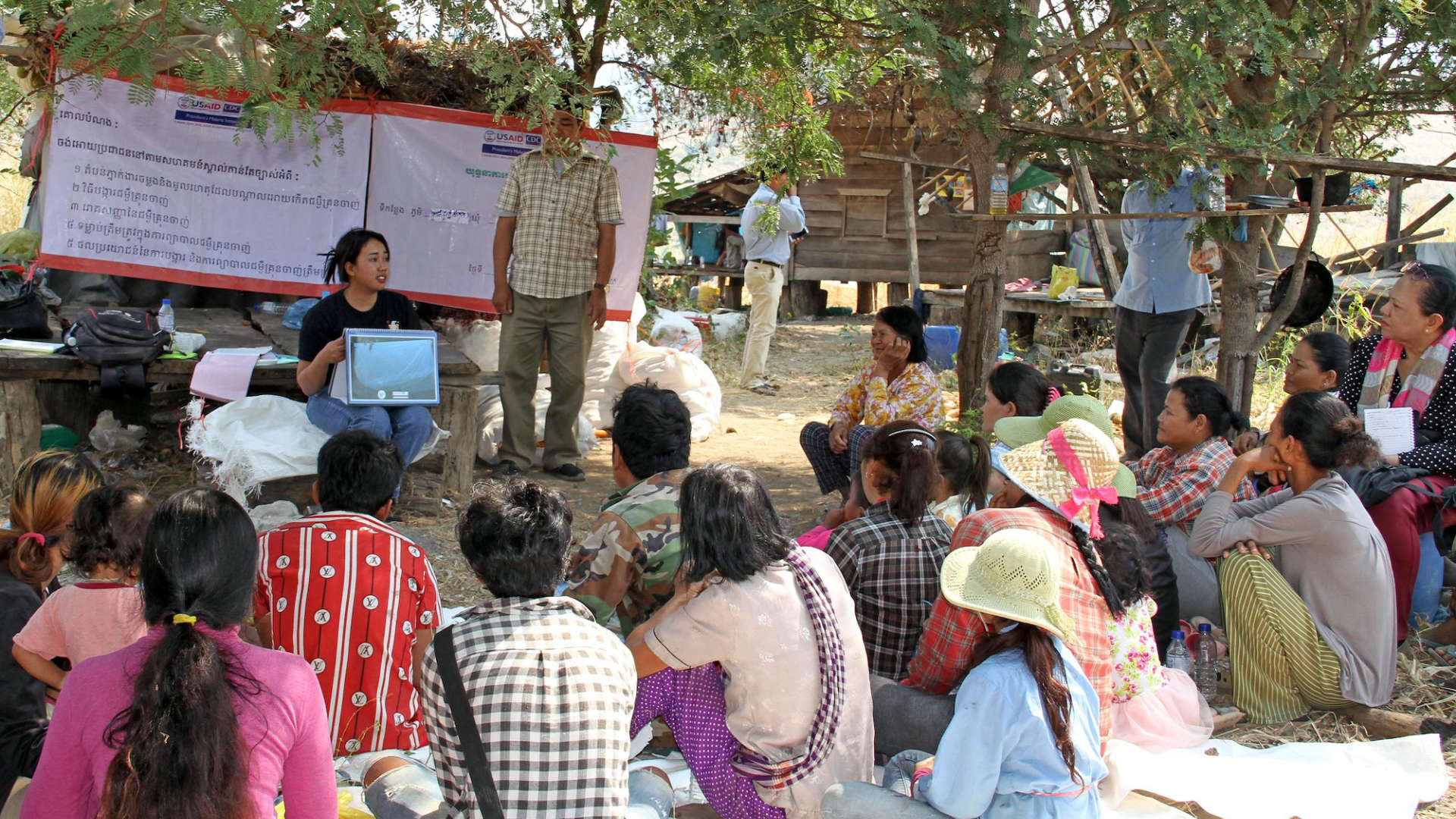Sun Chhen, a 23-year-old man living in Tadeh Village, does forest-related work to provide for his family. It was there he contracted Plasmodium falciparum (P.f.) malaria, a mosquito-borne disease, and the deadliest species of Plasmodium in humans. High-risk populations, such as forest workers, who engage in migrant and mobile work, are at particular risk for contracting malaria.
Malaria remains endemic in distinct geographical areas of Cambodia. This is a dramatic change compared with fifteen years ago, when the disease was endemic across the whole country. Thanks to the efforts of URC – as a U.S. President’s Malaria Initiative (PMI) implementing partner – together with the Cambodia National Center for Parasitology, Entomology and Malaria Control and other partners, overall malaria incidence has decreased from 7.4 cases per 1,000 people in 2006 to 0.26 per 1,000 in 2021 and zero malaria death since 2018.
Treatment Success
After his diagnosis by rapid testing, Sun Chhen was referred by the local village malaria worker (VMW) to receive P.f. treatment at the Mahidol-Oxford Tropical Medicine Research Unit, a research organization based in Phnom Kravanh Operational District (OD). Three weeks after completing the treatment, Sun Chhen still tested positive for P.f. He was referred to the Phnom Kravanh Health Center for a second treatment, a month after his initial diagnosis.
After completion of the second treatment, Sun Chhen was completely cured.
“I am very happy now that I got cured of malaria. I will tell my friends and my co-workers that malaria treatment is free of charge and safe.”
The URC-implemented Cambodia Malaria Elimination Project 2 (CMEP2) – funded by the U.S. President’s Malaria Initiative (PMI) and USAID – supports patients such as Sun Chhen. Support included malaria diagnosis, treatment, and follow-up by a VMW for a three-day direct observed therapy (DOT), and monitoring of treatment progress until follow-up with microscopy examination on day 28.
Early diagnosis and appropriate treatment of malaria reduces disease severity and transmission and prevents avoidable death. National program/WHO recommends that all suspected cases of malaria be confirmed by microscopy or a rapid diagnostic test. Diagnostic testing enables health providers to distinguish between malaria and other, non-malaria fevers, facilitating appropriate treatment and follow-up.
According to national data sources, there were 7,194 persons suspected of having malaria in 2021 who were tested in the Phnom Kravanh Health Center catchment area, of which 113 had confirmed malaria. Of particular concern was the seven patients who had P.f. malaria, a species that poses potential fatality and public health challenges if the Plasmodium parasite is not completely cleared from the patient. This is most effectively done with artemisinin-based combination therapy (ACTs) and single low-dose primaquine, as in the case of Sun Chhen’s treatment.
Krung Siv, a CMEP2 Cluster Lead in Phnom Kravanh OD who coordinated and supported Sun Chhen’s second treatment comments:
“In collaboration with the VMW and health center staff, this case was successfully treated as we can see the malaria parasite was cleared after a day 28 slide reading, in addition to three-day DOT completion of ACTs, and a single low-dose primaquine follow-up by the VMW until the last day of treatment.”



